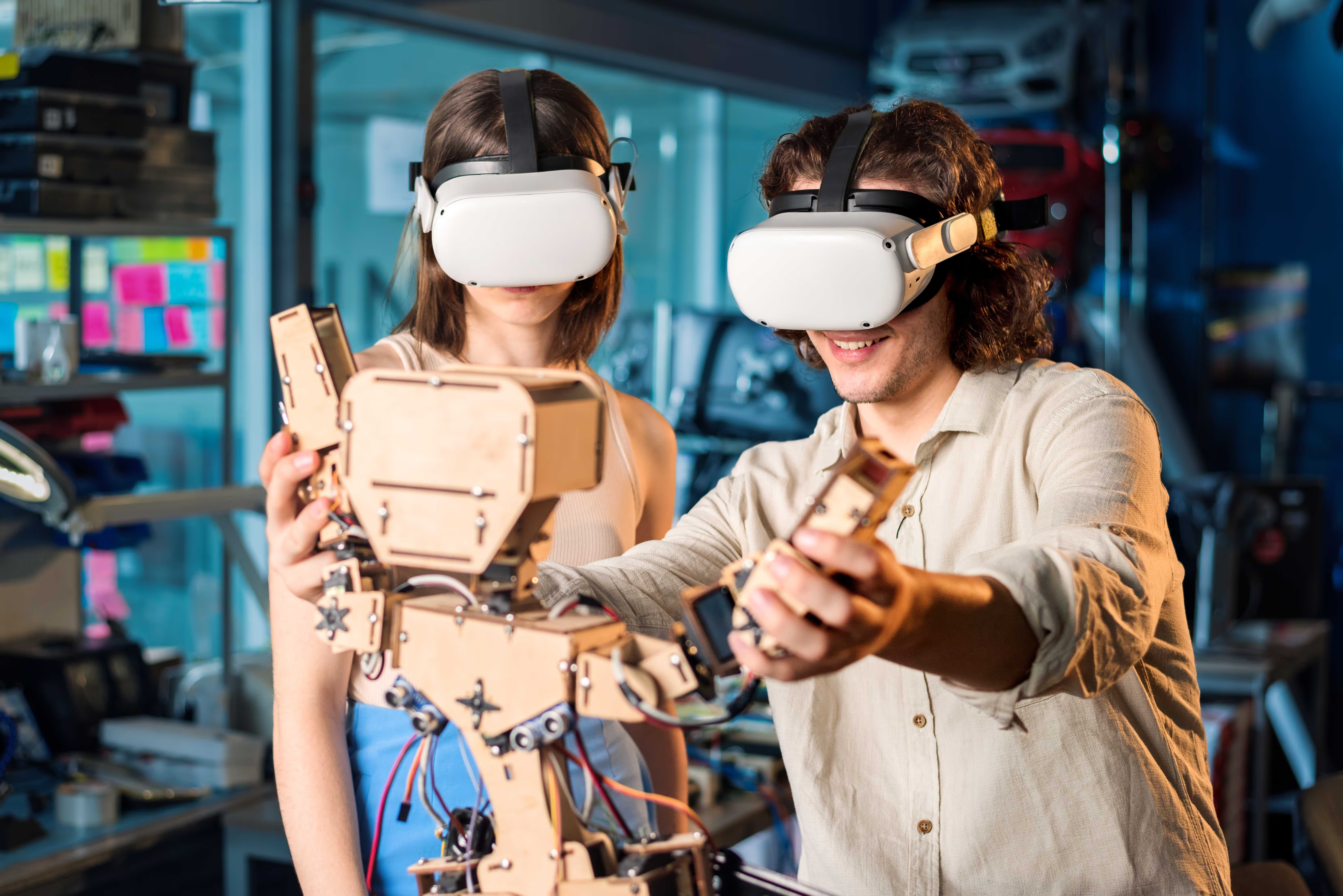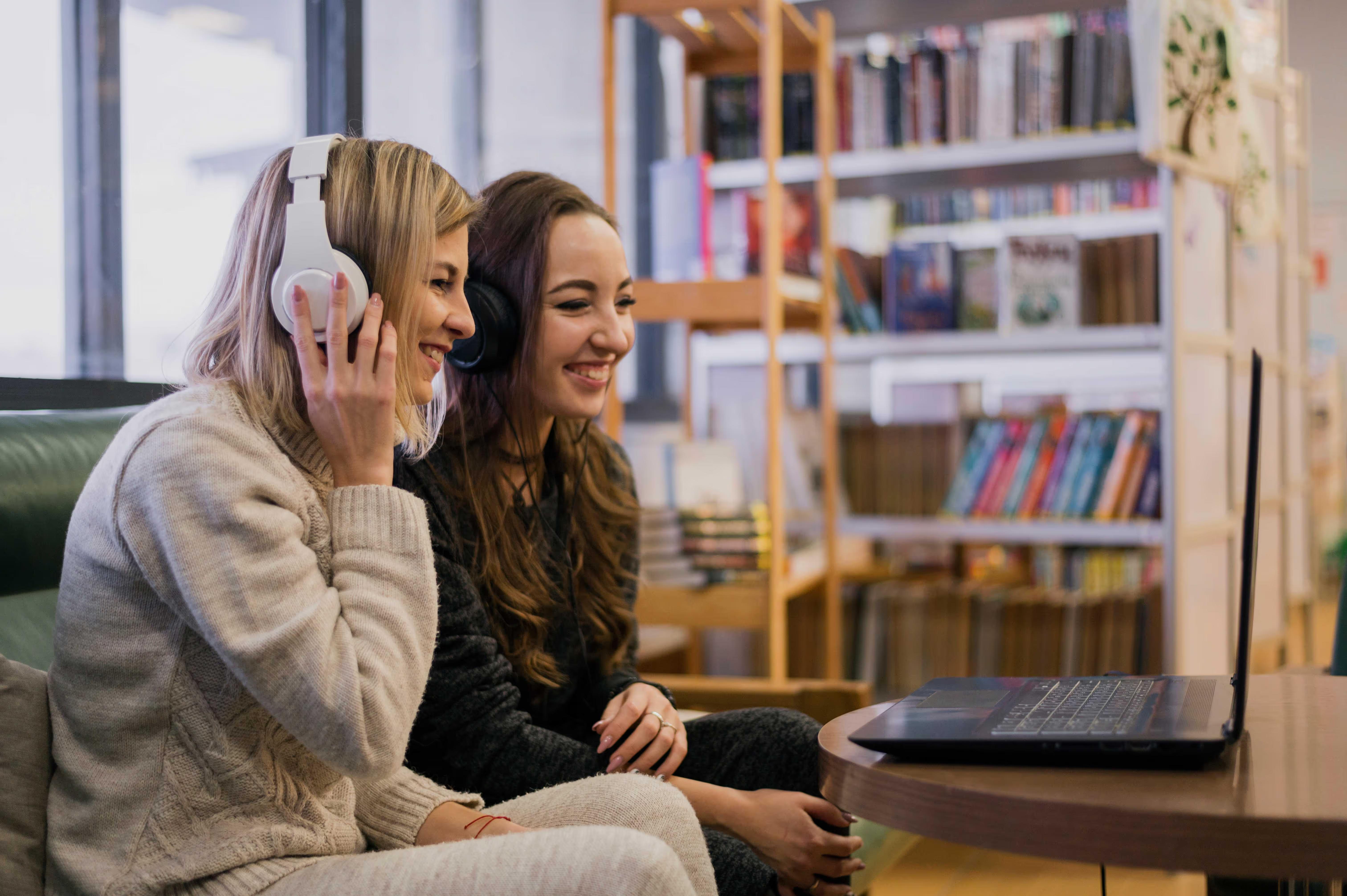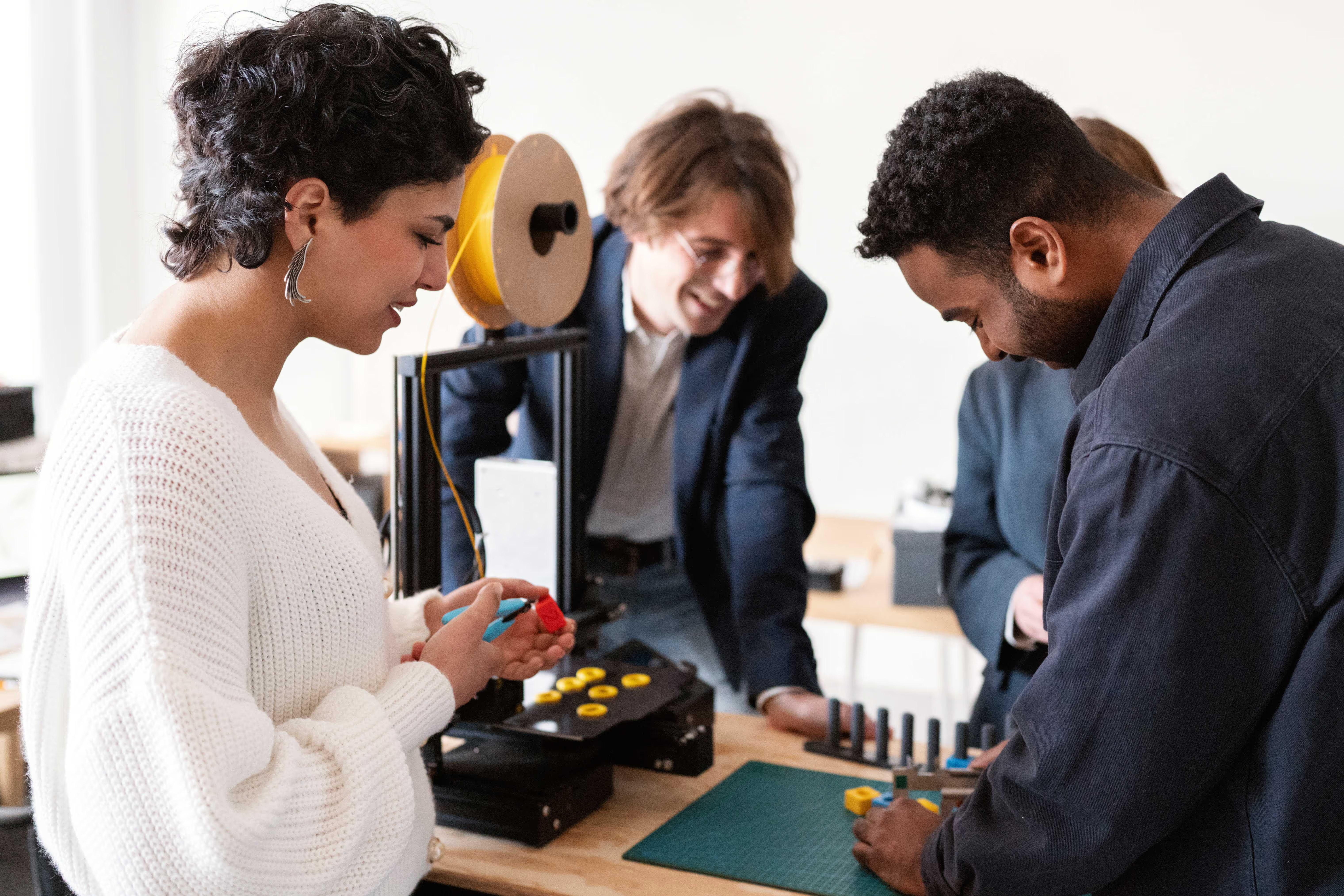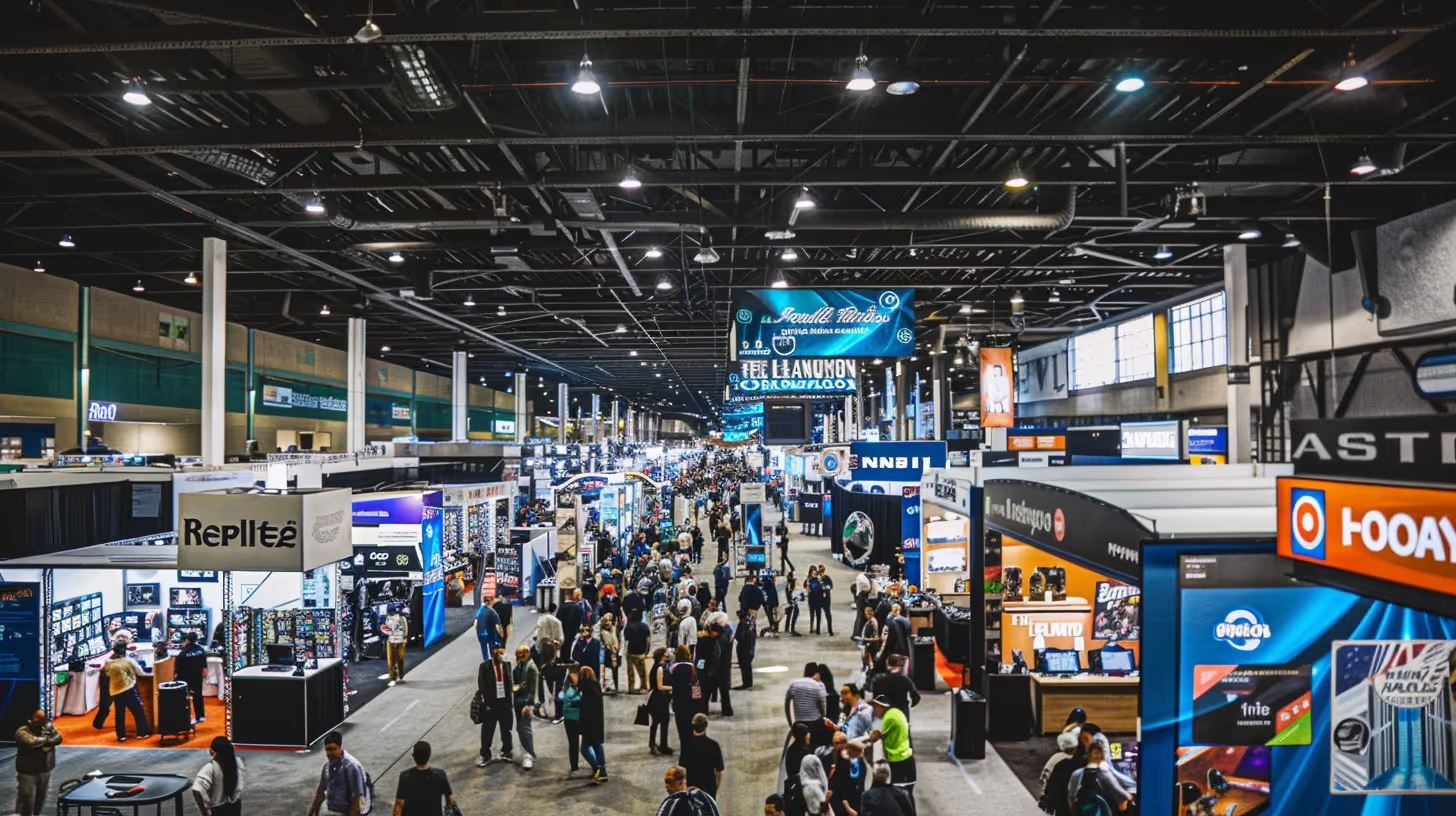Identifying your Ideal Customer Profile (ICP) is a crucial milestone in planning any exhibition or event. It helps you focus your marketing efforts on the audience most likely to engage with your brand, products, or services. But knowing who your audience is only takes you so far. The real challenge is figuring out how to engage them effectively once they arrive at your booth or exhibition space.
This is where understanding visitor learning styles becomes vital. People absorb and process information in different ways. Modern learning theory tells us that learning is not a one-size-fits-all process. It involves a range of sensory and cognitive approaches. By applying this knowledge, you can design your exhibition to cater to the three main learning styles: visual, auditory, and kinesthetic.
In this blog, we’ll explain what each learning style means, why it matters, and how you can tailor your exhibition design and content to create engaging experiences that resonate with your ICP — no matter how they prefer to learn. Whether you are planning an art gallery, a science expo, or a product showcase, this approach can help you create meaningful and memorable connections with your visitors.
Why Learning Styles Matter After Identifying Your ICP
After defining your ICP, you understand who you want to reach. Now, knowing how they learn and interact helps you plan the what and how of your exhibition content and design.
Visitors do not all process information the same way. Some respond better to images and visuals, some prefer listening and discussions, while others learn best by doing and touching. If your exhibition only caters to one style, you risk alienating a large portion of your audience.
By diversifying your exhibition elements to engage all three learning styles, you create an inclusive environment that appeals to a broader range of visitors. This boosts engagement, increases visitor satisfaction, and helps your brand message stick longer.
The Three Key Learning Styles and How to Engage Them
1. The Visual Learner

Visual learners understand and remember information best when it is presented in a visual format. They are drawn to eye-catching displays and are more likely to engage with images, charts, and videos than with large blocks of text.
Who are they?
These visitors appreciate the aesthetics and clarity of visual storytelling. Designers, artists, and people who think in images often fall into this category.
How do they learn?
- Through diagrams, flow charts, timelines, and infographics.
- Via photographs, films, and three-dimensional sculptures or models.
- By scanning visuals before they read any accompanying text.
How to engage visual learners at your exhibition:
- Use large, attractive graphics and high-quality images.
- Incorporate videos and animations that explain complex ideas simply.
- Create 3D models or interactive sculptures that visitors can observe.
- Keep written information concise and supported by visuals.
- Design your booth to be visually appealing, with a clear and balanced layout.
Why it matters:
A strong visual impact draws visitors in and encourages them to stay longer, increasing the chance they will absorb your message and engage deeper.
2. The Auditory Learner

Auditory learners absorb information best through listening and speaking. They prefer explanations, discussions, and sound-based presentations to purely visual or tactile experiences.
Who are they?
Visitors who enjoy verbal communication, storytelling, and interactive talks often fit this category. They may find traditional exhibitions that rely on text and visuals less engaging.
How do they learn?
- By hearing explanations, whether live or recorded.
- Through conversations and guided tours.
- Via audio guides and podcasts.
How to engage auditory learners at your exhibition:
- Provide audio guides that explain exhibits in clear, engaging language.
- Use interactive screens with voice recordings or narration.
- Organize live talks, presentations, or Q&A sessions with experts.
- Train your booth staff to engage visitors in meaningful conversations.
- Incorporate background sounds or themed audio to set the mood.
Why it matters:
Auditory engagement helps clarify complex topics and fosters personal connections. Visitors who learn by listening feel included and understood when their preferred learning style is catered to.
3. The Kinesthetic Learner

Kinesthetic learners prefer hands-on experiences. They learn by doing, touching, and interacting physically with their environment. Traditional exhibitions that keep objects behind glass and rely on observation may not satisfy these visitors.
Who are they?
These visitors are active, curious, and like to explore. They often include younger audiences, science enthusiasts, and anyone who benefits from experiential learning.
How do they learn?
- Through touching objects and manipulating exhibits.
- By participating in interactive activities.
- Through physical movement and direct engagement.
How to engage kinesthetic learners at your exhibition:
- Include touchable objects, samples, or tactile displays.
- Use interactive screens or technology that requires visitor input.
- Design hands-on activities, such as simulations or experiments.
- Provide tools or kits that visitors can use to explore concepts.
- Encourage movement through your space with engaging zones or challenges.
Why it matters:
Kinesthetic engagement creates memorable, immersive experiences that often lead to deeper understanding and enjoyment. It also makes exhibitions more accessible to visitors who might not engage through visuals or audio alone.
Designing an Exhibition That Appeals to All Learning Styles
Understanding these learning styles is just the beginning. The real value lies in applying this knowledge to your exhibition design and content strategy.
Balance Your Content Delivery
Don’t rely solely on one form of communication. Instead, create a rich tapestry of sensory experiences that include:
- Visual panels, infographics, and video displays for visual learners.
- Audio guides, live narrations, and staff interaction for auditory learners.
- Interactive exhibits, touchable models, and hands-on activities for kinesthetic learners.
This diversity ensures visitors can engage in the way that feels most natural to them, increasing overall satisfaction.
Use Technology Wisely
Modern technology allows you to mix and match learning styles seamlessly. For example:
- Touchscreen kiosks can combine visual content with audio narration and interactive elements.
- Virtual reality (VR) and augmented reality (AR) offer immersive experiences appealing especially to kinesthetic and visual learners.
- Mobile apps with audio tours and interactive maps can guide visitors through your space at their own pace.
Create Flexible Spaces
Design your exhibition layout with different zones that invite various types of engagement. A quiet corner with headphones and videos can cater to auditory learners, while an open area with tactile exhibits invites kinesthetic exploration. Bright, visually stimulating entrances or displays can capture the attention of visual learners.
Why This Matters for Your ICP and ROI
Understanding and catering to the learning styles of your Ideal Customer Profile is more than just good design — it’s good business.
When visitors engage deeply, they spend more time at your booth, absorb your key messages better, and are more likely to remember you after the event. This translates directly into higher quality leads, stronger brand loyalty, and a better return on investment.
Moreover, exhibitions that offer varied learning opportunities demonstrate inclusivity and respect for diverse visitor needs, enhancing your brand reputation.
Conclusion
After you’ve identified your Ideal Customer Profile, the next step is to understand how they learn and engage. Visual, auditory, and kinesthetic learning styles provide a useful framework for designing exhibitions that truly resonate with your audience.
By thoughtfully combining visual appeal, sound-based interpretation, and hands-on interaction, you can create rich, immersive environments that speak to all types of learners. This not only elevates the visitor experience but also maximizes the impact of your exhibition.
Great exhibitions are not just seen or heard — they are experienced. And experiences are what build lasting connections.
FAQs: Learning Styles and Exhibition Design
1. What are learning styles and why do they matter in exhibitions?
Learning styles describe how people best absorb information — visually, auditorily, or kinesthetically. Catering to these styles makes exhibitions more engaging and accessible.
2. Can a visitor have more than one learning style?
Yes. Most people use a combination of learning styles, but often have a dominant preference.
3. How can I tell which learning style my ICP prefers?
Research your ICP’s demographics, preferences, and behavior. Surveys, interviews, and observation at past events can offer clues.
4. Do all exhibitions need to cater to all learning styles?
Ideally, yes. Offering multiple engagement modes ensures broader appeal and deeper visitor connection.
5. What are some simple ways to add kinesthetic elements to an exhibition?
Include touchable samples, interactive screens, physical models, or simple hands-on activities that visitors can explore.
6. How can technology enhance learning styles in exhibitions?
Technology like audio guides, VR/AR, interactive kiosks, and apps can combine visual, auditory, and kinesthetic learning, providing immersive and personalized experiences.

.svg)




